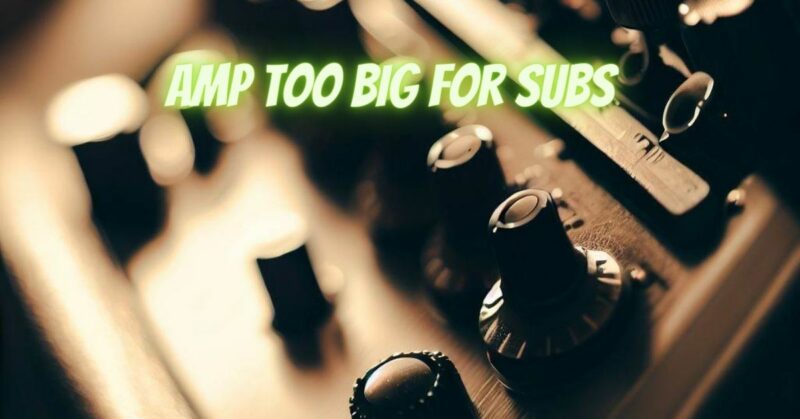In the world of audio systems, the pursuit of powerful bass and impressive subwoofer performance often leads enthusiasts to consider using an amplifier that appears to be “too big” for their subs. While it might seem like a bigger amp would automatically mean better bass, the relationship between amplifier power and subwoofer performance is more complex than it appears. In this article, we’ll explore the implications of using an amp that is too powerful for your subwoofers and the potential benefits and pitfalls of such a setup.
The Role of Amplifier Power
Amplifiers provide the necessary electrical power to drive speakers, including subwoofers. The power an amplifier delivers is typically measured in watts (W) and can have a significant impact on the performance of your subwoofers.
Using an Amp That’s Too Powerful
When you use an amplifier that has more power than your subwoofers can handle, several outcomes can occur:
- Overpowering Subwoofers: Subwoofers have power handling specifications, often indicated as RMS (Root Mean Square) power. If the amplifier delivers significantly more power than the subwoofer’s RMS rating, it can overpower the subwoofer, potentially leading to damage.
- Risk of Blown Subwoofers: Continuous exposure to an excessively powerful amplifier can lead to overheating and damage to the subwoofer’s voice coil or other components, resulting in blown subwoofers.
- Distortion and Clipping: An overpowered amp can cause the subwoofers to distort and clip, leading to poor sound quality. Clipping is the result of the amplifier being driven beyond its limits and can produce harsh, unpleasant sounds.
- Reduced Longevity: Continuous operation of subwoofers with an overpowered amplifier can reduce their lifespan, necessitating more frequent replacements and increased maintenance costs.
Using an Amp That’s Slightly Larger
While using an amplifier that slightly exceeds the subwoofer’s power handling capability is more common and generally safe, it still requires careful consideration:
- Increased Headroom: A slightly more powerful amplifier can provide additional headroom, allowing for cleaner and less distorted bass at higher volumes. However, this should be done cautiously and within reasonable limits.
- Correct Gain Setting: To avoid overpowering your subwoofers, it’s crucial to set the gain (amplifier input level) correctly. Proper gain adjustment ensures that the amplifier delivers the right amount of power to match the subwoofers’ specifications.
- Dynamic Peaks: A more powerful amp can handle dynamic peaks in audio content better, providing a more dynamic and punchy bass response.
In conclusion, the choice of amplifier power for your subwoofers should be carefully considered to avoid potential pitfalls. While it’s possible to use an amplifier that is slightly larger than the subwoofers’ power handling capacity to achieve better performance, it requires diligent attention to gain settings and speaker protection. On the other hand, using an amp that is significantly more powerful than your subs can result in damage, distortion, and reduced longevity.
The key to a successful audio setup lies in finding the right balance between amplifier power and subwoofer capabilities. Always refer to the manufacturer’s specifications for your subwoofers and follow recommended guidelines to ensure a safe and satisfying bass experience without compromising the integrity of your audio equipment.


